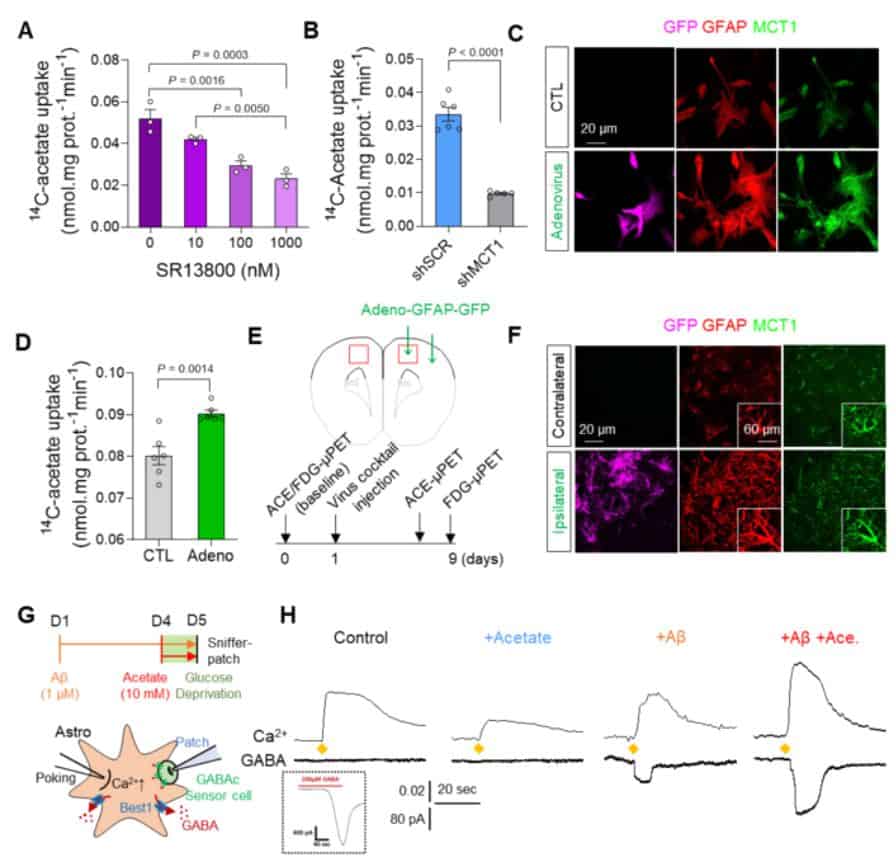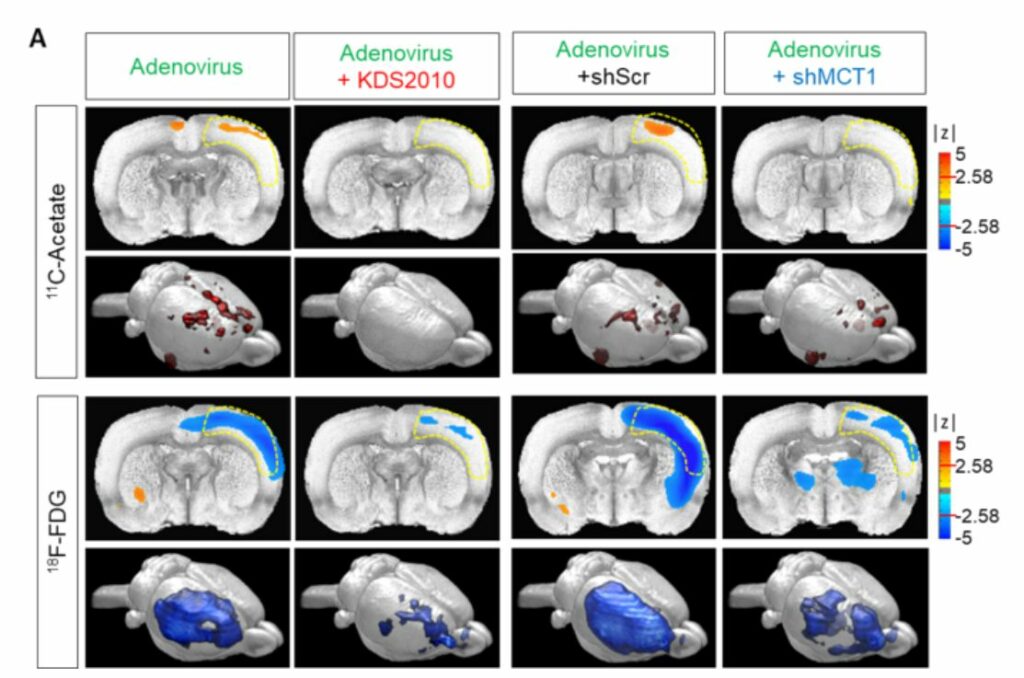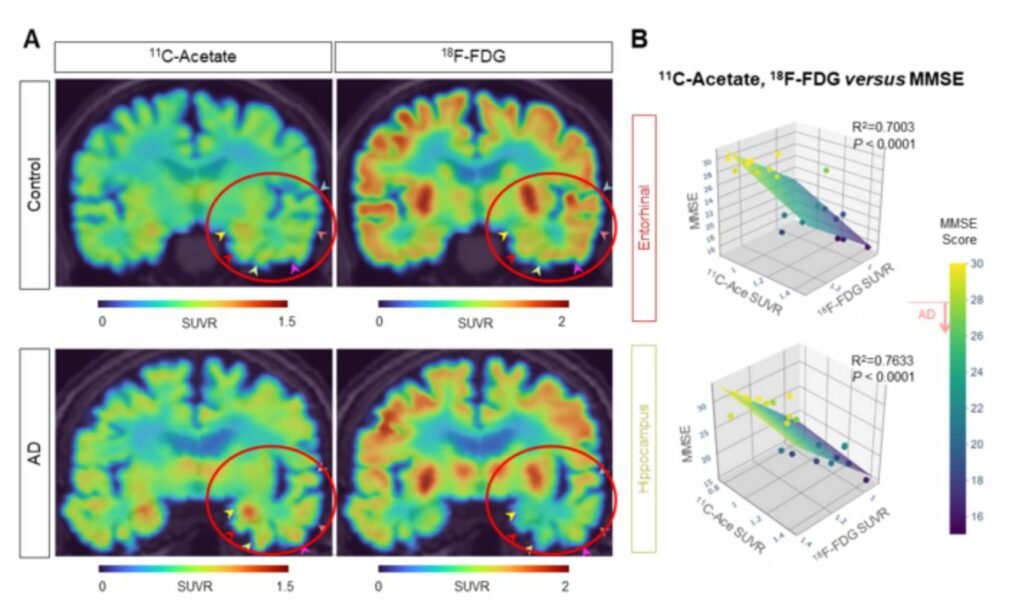New Study Offers a Promising Approach to Early Diagnosis of Alzheimer’s Disease
South Korean scientists from the Institute for Basic Science, led by Director C. Justin LEE, have made a groundbreaking discovery that could transform the way Alzheimer’s Disease is diagnosed and treated.
Their study used PET imaging to visualize reactive astrocyte-neuron interactions in the brain, uncovering new insights into the disease’s pathology. By identifying a mechanism where elevated levels of acetates are taken up by astrocytes, turning them into hazardous reactive astrocytes, the team developed a novel imaging technique to directly observe these interactions.
This discovery offers potential for a breakthrough in Alzheimer’s disease diagnosis and treatment.
Alzheimer’s disease, which is among the leading causes of dementia, is linked to neuroinflammation in the brain. However, traditional neuroscience has long believed that amyloid beta plaques are the primary cause of the disease. Unfortunately, treatments targeting these plaques have had limited success in treating or slowing the progression of Alzheimer’s. In contrast, Director C. Justin Lee proposes a novel theory that reactive astrocytes are the actual culprits of the disease. Reactive astrogliosis, a common feature of neuroinflammation in Alzheimer’s, often precedes neuronal degeneration or death.
Dr. C. Justin LEE’s team has previously reported that reactive astrocytes and the monoamine oxidase B (MAO-B) enzyme could serve as therapeutic targets for Alzheimer’s Disease. They have also confirmed the existence of a urea cycle in astrocytes, which promotes dementia when activated. However, despite the clinical significance of reactive astrocytes, brain neuroimaging probes to observe and diagnose these cells at a clinical level are yet to be developed.
In their latest research, the team utilized positron emission tomography (PET) imaging with radioactive acetate and glucose probes (11C-acetate and 18F-FDG) to visualize the changes in neuronal metabolism in Alzheimer’s Disease patients. This innovative technique provided a unique opportunity to study reactive astrocyte-neuron interactions and may pave the way for new diagnostic and therapeutic strategies for Alzheimer’s Disease.
According to Dr. NAM Min-Ho, one of the lead authors of the research paper, this study has significant academic and clinical significance by providing direct visualization of reactive astrocytes, which are now believed to be one of the primary causes of Alzheimer’s Disease.
In addition, they proved that acetate, which is the primary ingredient in vinegar, plays a significant role in promoting reactive astrogliosis, a condition that induces putrescine and GABA production and eventually leads to dementia. Through their research on rodent models of both reactive astrogliosis and AD, the team demonstrated that reactive astrocytes excessively take up acetate through elevated monocarboxylate transporter-1 (MCT1) (as illustrated in Figure 1A to 1F). This uptake of acetate has been linked to reactive astrogliosis, leading to increased astrocytic GABA synthesis when amyloid-beta, a well-known toxin protein in AD, is present (as shown in Figure 1G & 1H).

Through their research, the team discovered that PET imaging using 11C-acetate and 18F-FDG is a valuable tool in visualizing the acetate hypermetabolism caused by reactive astrocytes and associated neuronal glucose hypometabolism in brains affected by Alzheimer’s disease and neuroinflammation (as shown in Figure 2A). Additionally, by inhibiting reactive astrogliosis and astrocytic MCT1 expression in an AD mouse model, the researchers were able to reverse the metabolic alterations caused by reactive astrocytes. This could be a crucial step in developing potential treatments for Alzheimer’s disease in the future.

“Reactive astrocytes showed metabolic abnormalities that excessively uptake acetate compared to normal state,” adds Dr. YUN Mijin.
They discovered “that the acetate plays an important role in promoting astrocytic inflammatory responses.”
Using this novel imaging technique, the researchers revealed that changes in acetate and glucose metabolism were consistently seen in both the AD mice model and human AD patients (Figure 3A). They were able to verify that there is a significant association between the patient’s cognitive performance and both the PET signals for 11C-acetate and 18F-FDG (Figure 3B). These findings imply that acetate, previously thought to be an energy source unique to astrocytes, may promote reactive astrogliosis and aid in the inhibition of neuronal metabolism.

“By demonstrating that acetate not only acts as an energy source for astrocytes but also facilitates reactive astrogliosis,” points out Dr. RYU Hoon, “we suggested a new mechanism that induces reactive astrogliosis in brain diseases.”
For years, amyloid beta (Aβ) has been suspected as the primary cause of Alzheimer’s Disease, and as such, it has been the primary focus of most dementia research. However, the limitations of PET imaging in targeting Aβ have made it difficult to diagnose patients, and drugs designed to remove it as a target for AD treatment have not succeeded thus far. Fortunately, the recent discovery of the mechanism of reactive astrogliosis through acetate and the MCT1 transporter, as well as the possibility of using 11C-acetate and 18F-FDG PET imaging for early diagnosis of AD, offer a new possibility for Alzheimer’s disease diagnosis and treatment.
“We confirmed a significant recovery when inhibiting MCT1, astrocyte-specific acetate transport, in an AD animal model,” says Dr. C. Justin LEE, adding, “We expect MCT1 can be a new therapeutic target for AD.”
Source:10.1093/brain/awad037
Image Credit: Getty and Institute for Basic Science
